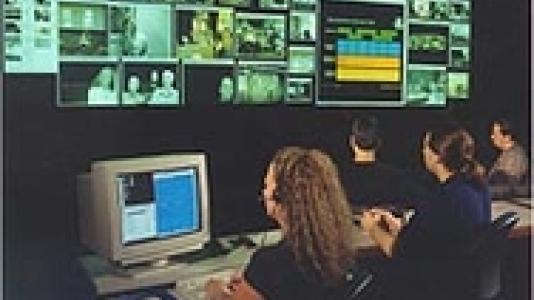
After a vision nearly 10 years ago to build a system to enable group-to-group collaboration using scalable computing and networking technology, researchers at the Department of Energy’s Argonne National Laboratory have been honored with an R&D 100 Award for their resulting product, Access Grid 3.0.
Access Grid 3 software uses open-source standards and Internet technology to create a collaborative environment in which users can see and hear each other as they navigate the space. According to Thomas Uram, one of the key developers of the software, “The central goal of the Access Grid is to establish an environment for cooperative work between remote participants and their digital media, a situation that is essential to address in a world where more people from more places are working together.”
The system is built on a paradigm of virtual meeting rooms, or “Virtual Venues.” Upon entering a Venue, one can participate in a number of activities as if all users were in the same room together. The software is designed to provide a natural feel, where users can see and hear one another, with video projected on a large display wall.
More than just videoconferencing, the Access Grid enables participants to share and interact with files and applications. The open nature of the Access Grid software has attracted thousands of users from around the world and has encouraged numerous commercial and research institutions to extend the software for their purposes.
Though competitive systems have videoconferencing capabilities, the Access Grid is the first of its kind to offer a free, extensible open- source collaborative environment. Further, the system is scalable, in that the number of video streams sent and displayed is limited only by the number of available machines and network bandwidth.
Applications of the software have included such diverse areas as computer science, surgical instruction, biology, climatology and game development. In one notable instance, fusion researchers in California used the Access Grid to successfully lead experiments at a fusion research facility in the United Kingdom . Via the Access Grid, the scientists were able to compare experimental data and make rapid decisions about parameter changes for the next plasma pulse experiment.
The Access Grid enables communications among remote collaborators with the feeling of “being there.” This capability is particularly salient today given the emphasis on carbon reduction. Researchers can work together naturally, seeing and talking with each other and sharing materials, while incurring a lower carbon load by avoiding unnecessary travel.
Access Grid 3 was first released in May 2006. The software is available to download from the project Web site, www.accessgrid.org . Supported platforms include Windows, Linux and OSX.
Story by Jenny deAngelis